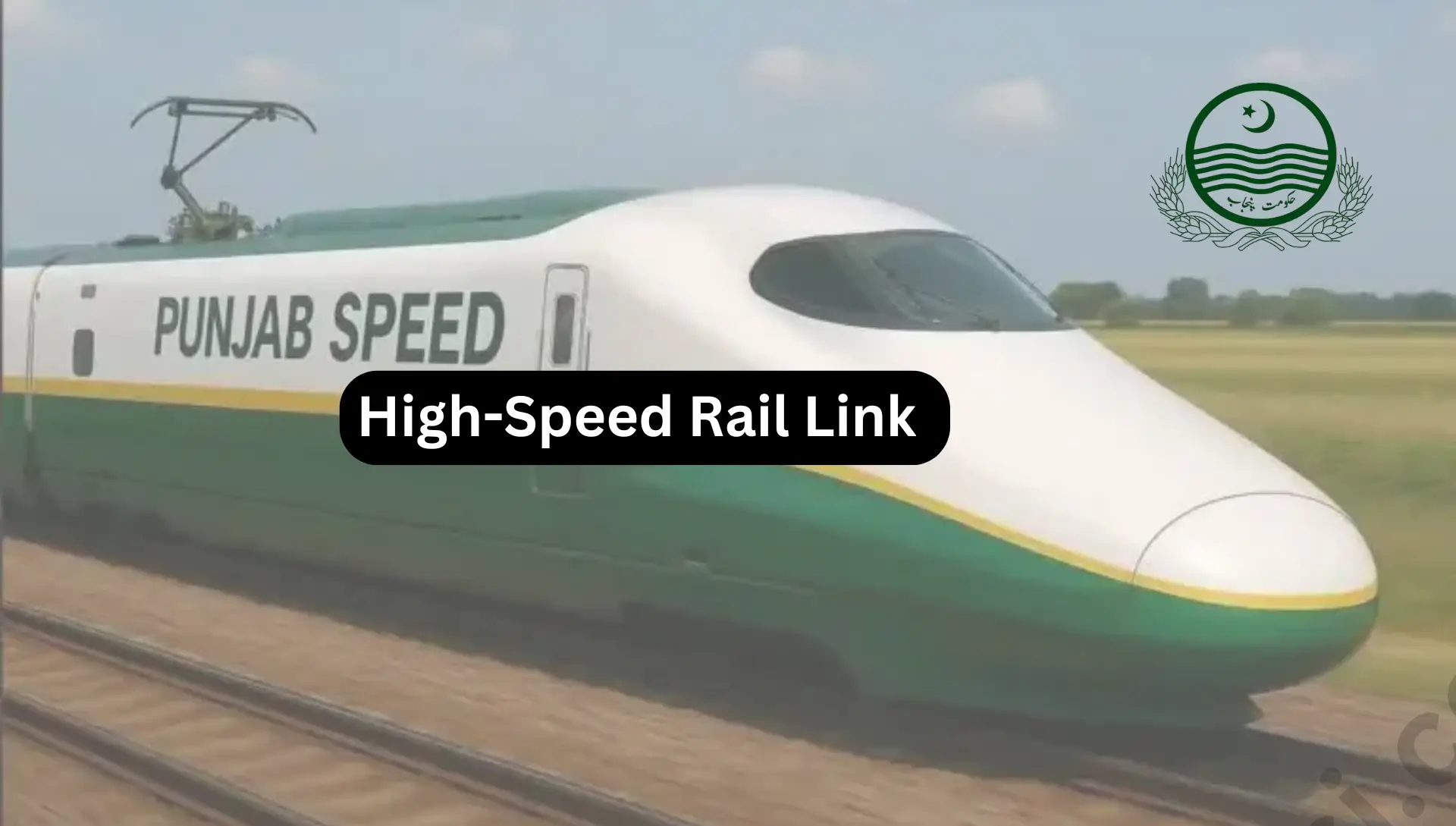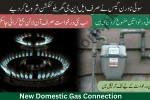High-Speed Rail Link 2025: Islamabad & Rawalpindi Connected With EV Railcar

High-Speed Rail Link 2025: Islamabad & Rawalpindi Connected With EV Railcar. Islamabad and Rawalpindi are on the brink of a revolutionary transport upgrade as the High-Speed Rail Link 2025 promises to redefine commuting between the twin cities. With the introduction of modern electric railcars (EV Railcar), daily travel will become faster, cleaner, and more comfortable. The Capital Development Authority (CDA) and Pakistan Railways have announced plans to sign a Memorandum of Understanding (MoU), marking the official start of this highly anticipated project.
In this article, we break down everything you need to know about the Islamabad-Rawalpindi EV Railcar, from routes and benefits to environmental impact, ticketing, and FAQs.
CDA & Pakistan Railways Collaboration: MoU Signing Soon
The initiative to launch a modern electric railcar service between Islamabad and Rawalpindi was recently highlighted in a high-level meeting at CDA headquarters.
Key participants included:
| Participant | Role |
|---|---|
| Muhammad Ali Randhawa | Chairman CDA & Chief Commissioner Islamabad |
| Syed Nafast Raza | CDA Board Member, Engineering |
| Dr. Khalid Hafeez | Member Planning & Design, CDA |
| Senior Officials | Pakistan Railways & CDA |
The agenda focused on:
- EV Railcar route options and layouts
- Ridership projections and daily commuter estimates
- Implementation strategies with international standards
- Environmental sustainability and eco-friendly transport
The MoU signing is expected to streamline planning, funding, and construction for the High-Speed Rail Link 2025, ensuring timely delivery of this transformative project.
Key Features of Islamabad-Rawalpindi EV Railcar Service
The new Islamabad-Rawalpindi Rail Link aims to offer:
- Smooth and safe travel: Advanced rail technology ensures minimal vibrations and maximum comfort.
- Affordable fares: Designed for daily commuters, tickets will remain economical compared to private transport.
- Eco-friendly transport: Electric railcars will reduce carbon emissions significantly.
- Reliable operations: Daily service schedules are optimized to match commuter peak hours.
The project will reduce the reliance on overcrowded public buses and traffic-congested roads, offering a faster alternative for students, professionals, and families.
Key Highlights of EV Railcar Service
| Feature | Details |
|---|---|
| Type of Rail | Electric-powered modern railcars |
| Maximum Speed | 120–150 km/h |
| Estimated Ridership | 30,000–50,000 commuters/day |
| Ticket Price | Affordable & subsidized options |
| Environmental Impact | Reduced carbon footprint, green transport solution |
| Additional Connectivity | Feeder electric buses to Margalla Station |
| Operational Hours | 6:00 AM – 11:00 PM daily |
Improved Urban Connectivity Across Islamabad
Chairman CDA Muhammad Ali Randhawa emphasized expanding rail connectivity to other areas in Islamabad with existing railway lines. This will make commuting more inclusive and accessible, allowing residents from multiple sectors to benefit.
Additional initiatives include:
- Feeder buses: Electric shuttles connecting nearby neighborhoods to Margalla Railway Station.
- Integration with metro and bus services: Seamless transfers for multi-modal transport.
- Station upgrades: Modernized waiting areas, ticket counters, and digital signage for real-time schedules.
Residents of sectors F-7, G-9, and I-10 can expect improved access to public transport within months of service launch.
Route & Technical Details
The proposed Islamabad-Rawalpindi EV Railcar route includes:
- Margalla Railway Station (Islamabad) – starting point
- Faisal Avenue Stops – 2–3 intermediate stations for easy access
- Rawalpindi Central Station – final stop
Route length: Approximately 25–30 km
Travel time: 25–30 minutes (compared to 60–90 minutes by road during peak hours)
This route is designed with global best practices in mind, ensuring safety, punctuality, and passenger convenience.
Environmental Benefits of EV Railcars
One of the main goals of this project is to reduce urban pollution and promote green transport in Pakistan.
Key environmental advantages:
- Reduced carbon emissions: Replacement of diesel-powered vehicles with electric railcars lowers greenhouse gases.
- Energy efficiency: Modern EV technology consumes less energy per passenger-kilometer.
- Potential carbon credits: Participation in international carbon credit programs to promote sustainability.
- Noise pollution reduction: Quieter trains improve quality of life along railway corridors.
The project aligns with Pakistan’s urban development and environmental targets, contributing to a cleaner, greener capital city.
Environmental Impact Comparison
| Transport Mode | Average CO2 Emission (per km) | Notes |
|---|---|---|
| Private Car | 180 g/km | High fuel consumption |
| Diesel Bus | 120 g/km | Overcrowded during peak hours |
| EV Railcar | 15 g/km | Efficient & clean energy source |
Traffic Reduction & Enhanced City Life
With urban population growth, traffic congestion in Islamabad and Rawalpindi has become a significant concern. The High-Speed Rail Link 2025 aims to:
- Ease road congestion: Thousands of commuters shifting to rail will free up road space.
- Lower fuel usage: Reduced reliance on petrol-powered vehicles saves energy and money.
- Support urban development: Encourages development of areas surrounding stations.
- Offer stress-free commuting: Comfortable, predictable, and punctual travel improves work-life balance.
Chairman Muhammad Ali Randhawa described this rail service as a “gift to the people of Islamabad and Rawalpindi” – a smarter, faster, and environmentally conscious travel solution.
Economic & Social Implications
The EV Railcar project is expected to:
- Boost employment: Job creation in construction, operations, and maintenance.
- Encourage local business growth: Increased footfall around stations benefits retail and service sectors.
- Promote tourism: Quick access between twin cities attracts tourists and visitors.
- Affordable commuting for students & professionals: Supports education and workforce mobility.
Integration with Pakistan Railways & Modern Transport Network
The collaboration between CDA & Pakistan Railways ensures:
- Streamlined planning and coordination for operations.
- Shared expertise in rail construction and maintenance.
- Access to national-level transport planning resources.
- Potential expansion to other cities in the future, forming a modern urban rail network in Pakistan.
This is not just a local project but part of a larger vision to modernize Pakistan’s urban transport system using sustainable technologies.
FAQs
Q1: When will the EV Railcar service start?
A1: The official launch date will be announced after the MoU signing and completion of route construction, expected in late 2025.
Q2: How long will it take to travel from Islamabad to Rawalpindi?
A2: Approximately 25–30 minutes, much faster than commuting by road during peak traffic hours.
Q3: What will be the ticket price for commuters?
A3: The service is designed to be affordable, with pricing details expected to be released closer to launch.
Q4: Will the service be eco-friendly?
A4: Yes, the EV Railcars run on electricity, significantly reducing carbon emissions compared to diesel-powered vehicles.
Q5: Are there plans to expand the rail service to other areas?
A5: Yes, feeder buses and expansion to sectors with existing railway lines are planned to improve accessibility.
Conclusion
The High-Speed Rail Link 2025 connecting Islamabad and Rawalpindi is a transformative project that promises fast, eco-friendly, and affordable commuting for thousands of residents daily. By integrating electric railcars, modern planning, and international best practices, the project not only reduces traffic and pollution but also enhances urban life, promotes economic growth, and strengthens social mobility.











